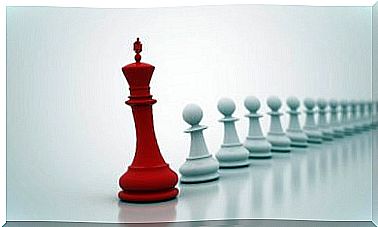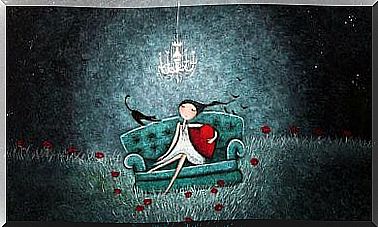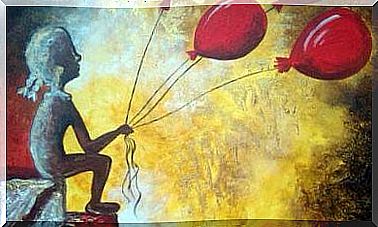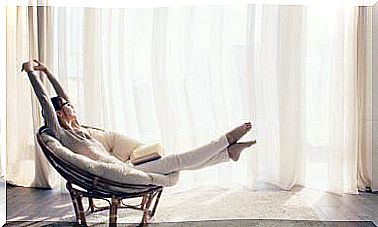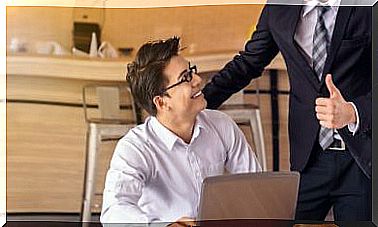Focusing, A Technique For Self-exploration And Stress Reduction

The focusing is a very effective therapeutic tool where the person should be aware of what happens in your body and then proceed to emotional healing. It would therefore be a matter of learning to focus our gaze and our attention towards that “felt sensation” in order to relate much better to ourselves and thus face the problems of life.
We are aware that in terms of stress and anxiety management we have already read almost everything. We also understand that sometimes, after having gone through therapy, who after having tried various approaches, schools, and gone through various clinics continues to drag almost the same problems. Why do we sometimes feel that psychotherapy is of no use to us?
This is what Eugene Gendlin asked himself in his day. To those who do not say anything this name, it should be noted that this experiential philosopher, psychotherapist and colleague of Carl Rogers, asked the same thing for a good part of his professional career. Thus, if there was one thing that characterized Dr. Gendlin, it was his determination, his curiosity and his obsession with research.
It was throughout the 60s when after hundreds of analyzes and therapeutic sessions he realized one thing. There was a way, a powerful emotional resource that allowed him to successfully complete 95% of the interventions with his patients. That technique, that therapeutic process that Dr. Eugene Gendlin developed is called focusing.
What this philosopher and therapist developed earned him the first prize as distinguished psychologist by the “American Psychological Association” (APA) and today, the focusing technique can be applied to any area of our life: management of the stress, education, health, work, creativity. ..
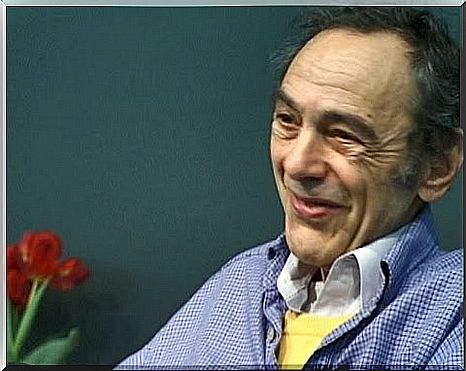
What is focusing ?
To understand what focusing is, we will start with a simple example. Let’s say we come home at night and our partner asks us “how’s the day?” We, as always, answer that “fine, tired but fine.” We may even tell you an anecdote about a colleague or tell you what we have to do the next day.
Now, Eugene Gendlin in his sessions invited patients to describe their “felt sense. ” This term may seem little more than a redundancy to us, but what I was really looking for was to explore in that physical-emotional universe that went beyond words, beyond the story of “today has been a normal day, I’m tired, but fine. ”.
Thus, and in case we focus our attention on the body itself, we will most likely do another type of reading : there is abdominal pain, tension in the stomach, we perceive stiffness in the never, a racing heart and a hammering headache that is extends only in half skull. All of these are felt emotions, clues that perhaps there is something in our life that may not be going as well as we think.

The focusing is above all one of the best known psicoterapias body. It is also part of other types of approaches such as Wilhelm Reich’s character-analytic vegetable therapy or Alexander Lowen’s bioenergetic analysis. They are psychological prisms that arose at the time as a reaction to behaviorism or psychoanalysis, where interest is returned to human experience, to sensations and not only to observable and measurable behavior.
- The focusing puts us in touch with our emotions and feelings through the felt experience.
- At first, these physical processes can go unnoticed to us. However, when we delve into why that tension, that overload, that annoyance arises an emotional quality that must be translated into words. After accepting that emotional reality, that problem will then proceed to action, to a healthy behavioral change.
How we help the focusing manage stress
If there is something we all know, it is that it is not easy to discourage stress or anxiety. Often, it is not enough for us to relax, it is not much use that the weekend arrives if the following Monday, we go back to donning the same suit, in the same heavy and rusty diving suit from which it is impossible to free ourselves.
The focusing we propose to begin a gradual detachment attending the “felt sense”, but we must do it properly. These would be the recommended steps.
Keys to practicing focusing
The first step of focusing is putting into practice what is known as “clearing a space.” It consists of directing our attention to each physical sensation. For example, if at work they tell us that we should make a report, go to a certain place or get in touch with someone, and what we experience at the moment is stomach pain, let’s ask ourselves why this physical discomfort occurs.
- Ideally, you should not let one physical discomfort after another cling to you. The focusing immediacy demand requires us to ask what’s between us and that feeling, that feeling.
- It invites us to have a compassionate dialogue with ourselves. It is necessary that we ask ourselves with kindness what happens to us, what hurts us, what worries us.
- You have to establish a relationship of trust with the body to listen to it, accepting the experiential reality of each moment to become aware of our weaknesses and also of our strengths.
- The focusing also requires action involves generating changes in our behavior to restore physical and emotional balance.
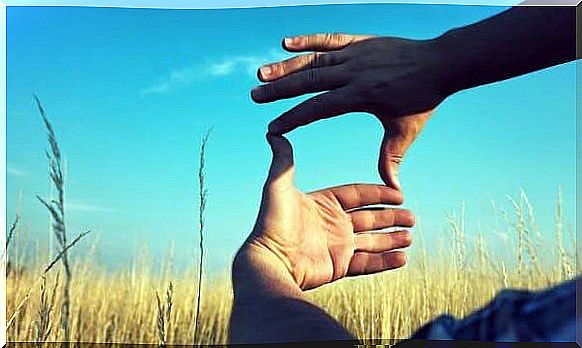
To conclude, we are sure that this humanistic practice, this approach to self-exploration and physical self-awareness seems at first glance as useful as it is interesting. Actually it is. However, it must be said that no one learns to establish such genuine communication with their own body and their emotions from one day to the next. It takes time, patience and will.
Awareness of the felt experience to proceed to emotional healing and proper stress management involves a few weeks of training. However, it can be done and the results are undoubtedly sensational.


